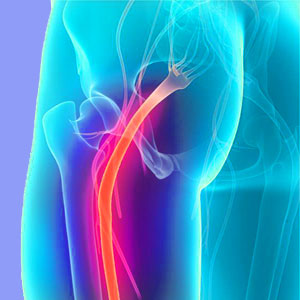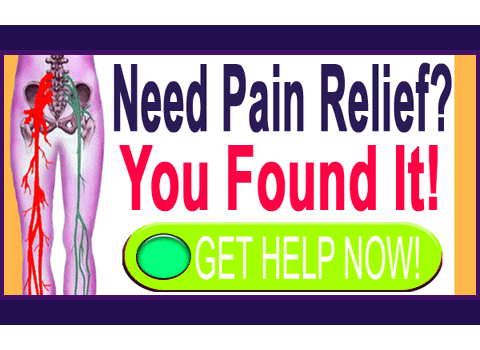
We often get requests for sciatica tips and advice from patients who are affected with chronic back and leg pain conditions. Most patients realize that finding a true and lasting cure for sciatica is very difficult, but managing their symptoms might be an objective that is far easier to achieve.
Although not all tips work for every patient, we have found many recommendations that do help alleviate sciatica pain by reducing the severity and duration of attacks. As part of our continuing advocacy and education efforts, we have crafted this article to help patients to best live with sciatica, if they discover that they can not cure their condition entirely.
This discussion focuses on simple and effective methods of pain management and symptom avoidance that can be practiced by anyone who suffers with sciatic nerve pain.
Sciatica Tips to Prevent Pain
Preventing sciatica is almost as good as curing it. Therefore, we have taken the initiative to study many possible methods of reducing the likelihood of suffering an acute symptomatic attack. In our research efforts, we have discovered that the following practices all help to minimize the risk of enduring a flare-up of sciatic nerve pain:
Patients must perform trial and error experiments to find the best positions and worst positions for their pain. If a particular posture or anatomical positioning creates pain, then it is best to circumvent the risk by avoiding the cause whenever possible. Every patient will have specific alleviating and exacerbating positions. However, we found that generally speaking, sitting seems to aggravate sciatica in about 80% of patients, while standing tends to minimize it in at least 50%. When reclining, lying on the unaffected side (if applicable), is preferred, compared to lying on the back or on the painful side.
It is not advised to carry items in the back pocket, especially when sitting down. These items can concentrate force on the sciatica nerve. Some patients find seated relief using a special sciatica cushion that removes stress from the sciatic nerve region of the buttocks, but this is not a universally enjoyed boon.
Staying physically active helps up to 90% of affected patients to minimize pain, while sedentary patients suffer attacks 4 times as often. Likewise, overweight people have far more frequent sciatica flare-ups than height/weight proportionate people.
Pacing yourself during physical exertion is crucial to avoiding sciatica and all forms of back and neck pain. Doing too much, or working for too long, are common causations of acute symptoms.
Ironically, seeking professional treatment for sciatica, regardless of the type of care utilized, increases the risk of future attacks by a margin of 3 to 1 over patients who do not seek any professional care. This statistic speaks volumes about the poor efficacy of most accepted therapy choices.
Tips to Minimize Sciatic Nerve Pain
Once sciatica strikes, it is too late to prevent the terrible suffering. However, this does not mean that proactive efforts will not still be useful in reducing the severity of pain experienced. We have discovered that the following sciatica tips can all minimize the degree and duration of pain in many patients:
During acute attacks, it is best to remain gently active, as soon as this is possible. Patients who recline in bed for days tend to stay in pain, while those who get up and gingerly move about, tend to recuperate quicker. This has been proven in about 93% of our surveyed patients over the past 11 years.
Patients who relax and do not stress over their pain recover much faster than those who obsess over the agony and fear that their pain will not end. Patients who place timelines on their recovery also suffer extended bouts of sciatica. It is best to allow nature to resolve the pain without adding emotional fuel to the fire. Patients who can relax through the worst pain tend to get better the fastest.
Patients who stay in touch with their emotions tend to suffer less severe and shorter attacks of all manner of back, neck and sciatica pain conditions. It is a well known fact that psychoemotional exacerbators can worsen any type of pain, be it psychosomatic, anatomically-motivated or a combination of both causations acting in unison. Basically, this means do not repress or suppress emotions, thoughts or feelings for best health.
Patients who can avoid pharmaceutical therapies during acute attacks fare better in their general health. Additionally, patients who use holistic methods of care tend to recover quicker and also enjoy other overall wellness benefits from such constructive pain management techniques as massage, exercise and the various cognitive practices that can help the brain to perceive less pain.
Sciatica Tips for a Better Life, Despite Pain
Dwelling on the pain is surely a detrimental factor for patients with chronic symptoms. The more a person thinks about sciatica, the more the negative neurological patterns will become ingrained in the mind. In essence, sciatica becomes a high priority in the conscious mind and more neuron connections are made to insure that it stays this way. Likewise, the less people can stress or obsess over severe pain, the less important the condition will seem to the mind. Therefore, neuron connections will become dormant and the severity and duration of future painful attacks should be reduced. This process is called neuroplasticity and it forms the basis of the best and most constructive symptom management techniques that are available in the field of chronic pain coaching.
Statistically speaking, patients who use a combination of cognitive, emotional and physical self-managed care techniques fare much better than patients who rely completely on the traditional treatments for sciatica. Neither has an advantage in finding a cure, but the self-managed patients report living better and avoiding the many risks associated with the worst medical therapies, including drugs, injections and surgeries.
Therefore, it is our continuing recommendation that all sciatica sufferers become more involved in their diagnostic and treatment protocols. Better yet, we suggest that self-managed care provides some of the best pain relieving results, at the lowest risk. It is natural for us to get behind home-based techniques that lead to markedly improved mindbody health and fewer, less severe symptomatic flares. For more information of these sciatica tips, talk to your doctor, therapist or a qualified pain coach.





